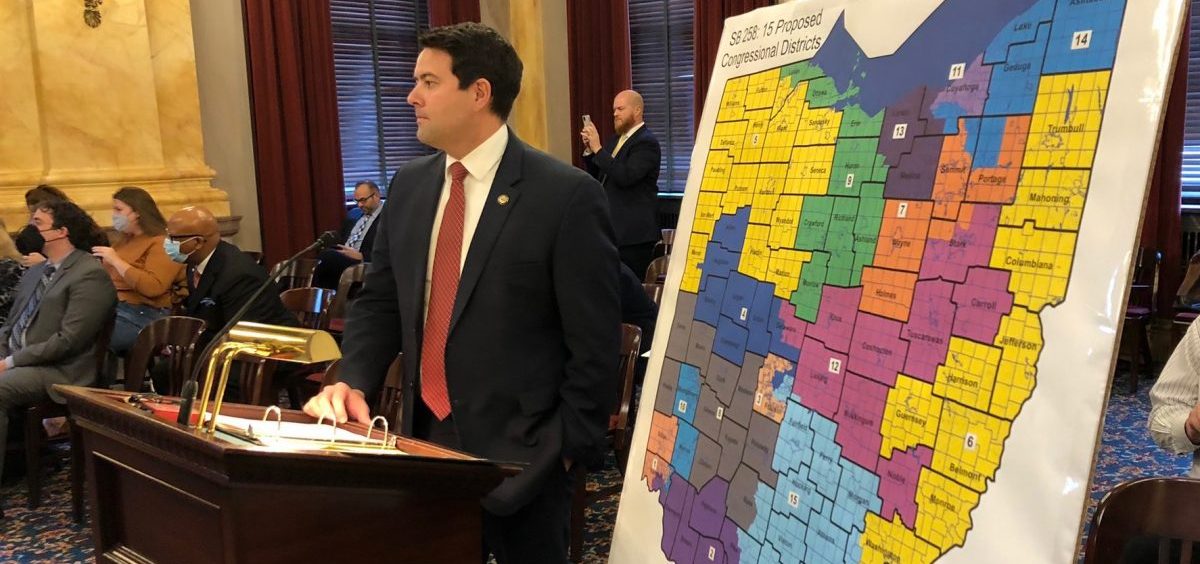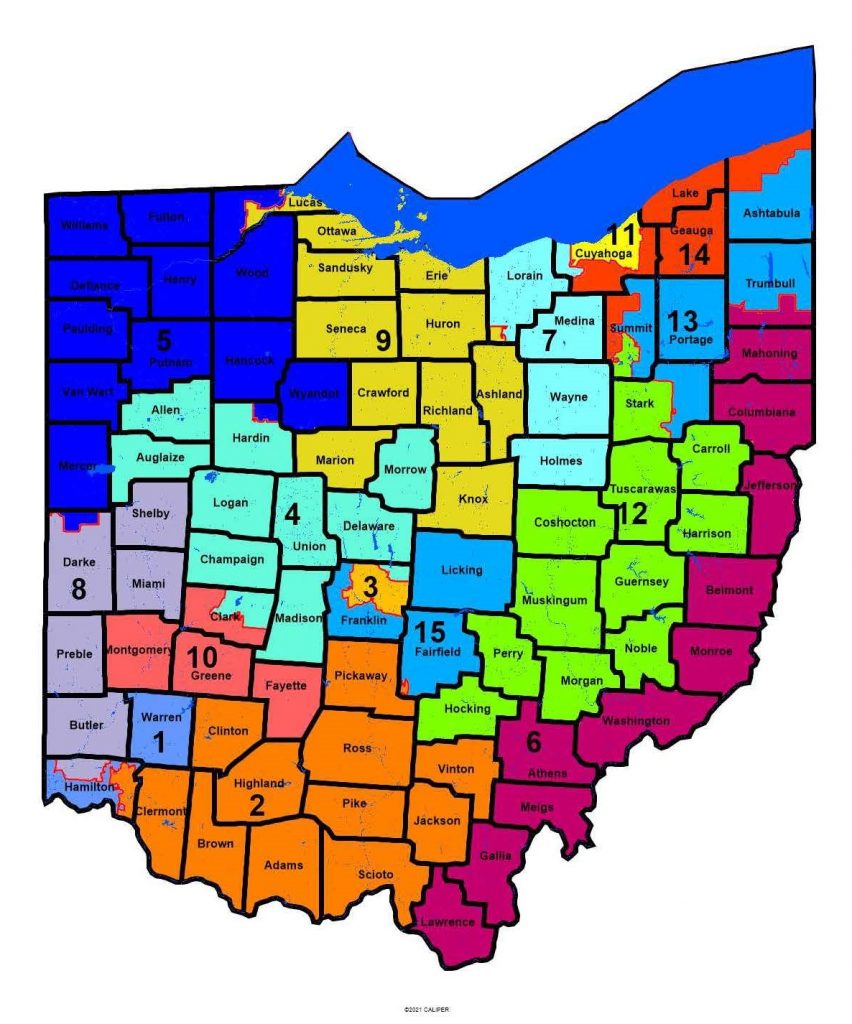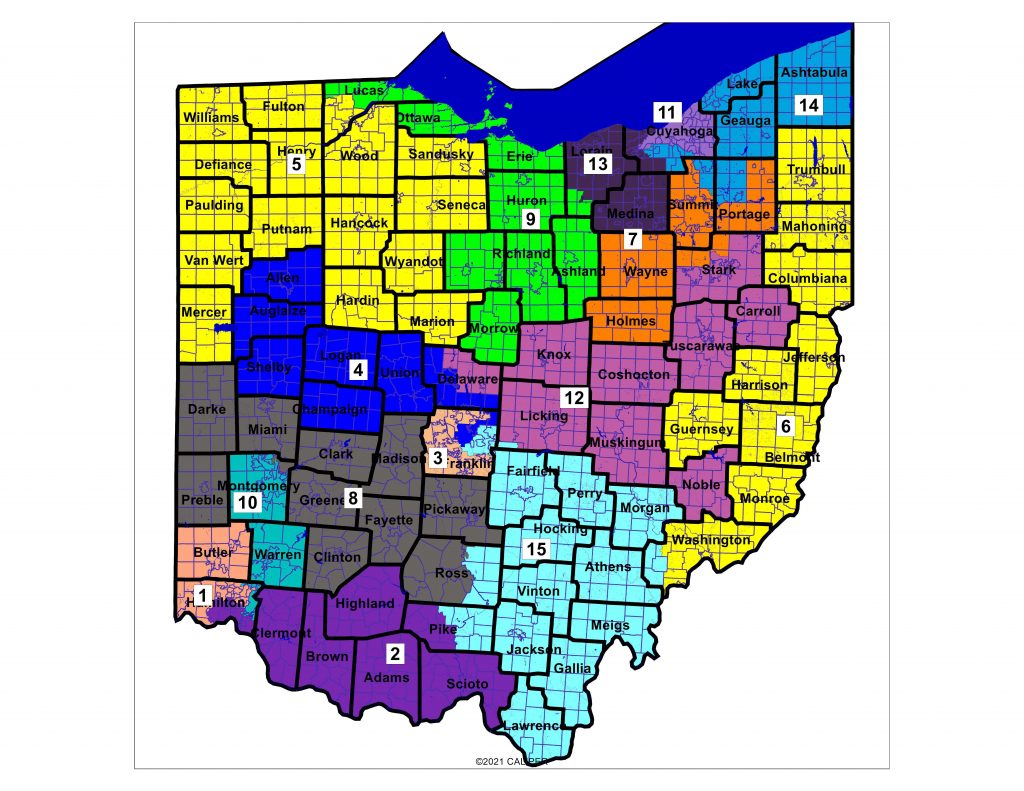News

Ohio GOP lawmakers unveil Congressional map proposals
By: Andy Chow | Statehouse News Bureau
Posted on:
COLUMBUS, Ohio (Statehouse News Bureau) — State Republican lawmakers are introducing two proposals, one from the House and one from the Senate, for new Congressional district maps.
The roll-out comes with confusion over how exactly the maps break down, with voter rights groups arguing a lack of transparency in the process.
The maps were presented during House and Senate committee meetings Wednesday, but Republican leaders did not provide the detailed files needed to see where the districts lines lie and how they break down politically.
Rep. Stephanie Howse (D-Cleveland) said the Republicans failed to provide all the information needed to understand their maps.
“If I can’t figure it out and I’m here, what do you think the average Ohioan is going to do,” said Howse.
The Republican maps differ on how many are strong GOP districts and competitive districts. But both only have two strong Democratic districts.
According to Dave’s Redistricting, a national legislative district analyst, the House GOP proposal, HB 479, creates 13 districts that heavily favor Republicans and two districts that favor Democrats.

The Senate GOP’s proposal for a new Congressional district map, SB 258, creates six districts that favor Republicans, two districts that favor Democrats, and seven districts that lean Republican.

Voter rights groups are questioning the definition of competitive districts by Republican leaders. House Republicans were basing competitiveness on districts that split 55% Republican and 45% Democratic.
Sen. Rob McColley (R-Napoleon) introduced the Senate GOP map in committee. He argued the proposal created more competitive districts than the current maps, where Ohio has 12 Republican congressional members and 4 Democratic congressional members.
“I know there’s been some discussion about whether it unduly favors or does favors a political party or it’s incumbent. That is not a requirement unless we were to draw a four-year map,” said McColley. “Additionally, I would say that our goal and our hope is that we get the opportunity to draw a ten-year map.”
Ohio voters approved reforms to the Congressional redistricting process in 2018. Those changes included rules for mapmakers to limit the amount of times counties could be split. Most of Ohio’s counties are required to be kept whole with the five largest counties allowed to be split twice, creating three different districts.
McColley says the Senate plan only splits 14 counties. Eleven counties split with one line, and three counties are split with two lines. Those three counties are Franklin, Cuyahoga, and Hamilton. The Senate map puts two sets of Congressional incumbents in the same district; Republican Bill Johnson and Democrat Tim Ryan in one, and Democrat Joyce Beatty and Republican Jim Jordan in the other.
But members of Congress are not required to live in the districts they represent – only the state they represent.
The House plan splits 13 counties, keeping the rest whole. That Congressional map creates three districts out of four counties; Franklin, Cuyahoga, Hamilton, and Summit.
9(MDU1ODUxOTA3MDE2MDQwNjY2NjEyM2Q3ZA000))

